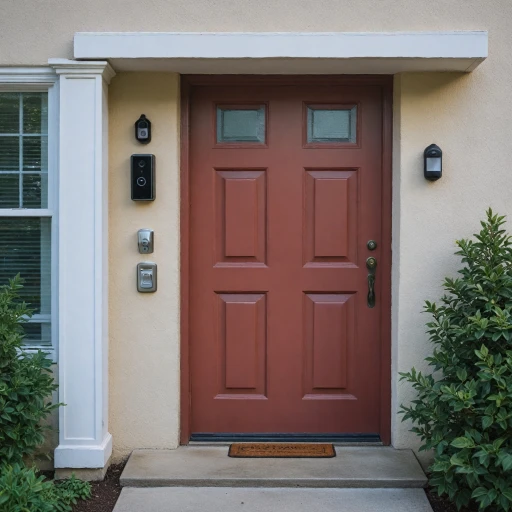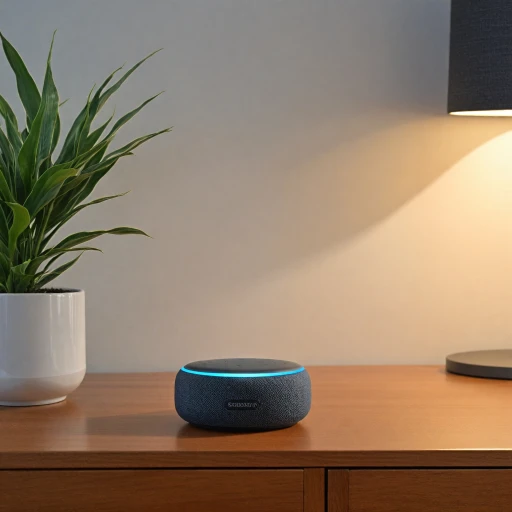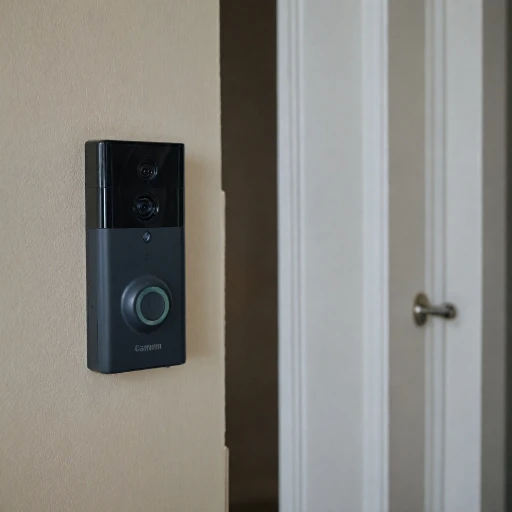
Understanding the Basics of HomeKit and Ring
Getting to Know HomeKit and Ring
When diving into the world of smart home technology, two names often come up: Apple's HomeKit and Ring. Both are leaders in their respective fields, offering unique features that enhance home automation. However, understanding the basics of these systems is crucial before attempting any integration.
HomeKit: Apple's Smart Home Framework
Apple HomeKit is a framework that allows users to control smart home devices using Apple devices like iPhones, iPads, and the HomePod. It provides a secure way to manage various smart devices through the Apple Home app. With HomeKit, you can control lights, thermostats, and even cameras, all from a single interface. The exploration of HomeKit-compatible doorbells can offer further insights into its capabilities.
Ring: A Leader in Smart Security
Ring is renowned for its video doorbells and security cameras. The Ring app allows users to monitor their homes in real-time, providing peace of mind with features like motion detection and video recording. Ring devices are designed to be user-friendly, making it easy to add and manage devices within the Ring ecosystem.
Why Integration Matters
Integrating HomeKit with Ring can create a seamless smart home experience. By combining the strengths of both systems, users can enjoy enhanced control and convenience. However, this integration isn't straightforward due to compatibility challenges, which we'll explore further. Understanding the basics of each system is the first step towards a unified smart home setup.
Compatibility Challenges Between HomeKit and Ring
Compatibility Hurdles Between HomeKit and Ring
When it comes to integrating Ring devices with Apple HomeKit, users often encounter several compatibility challenges. The primary issue is that Ring, a popular choice for video doorbells and security cameras, does not natively support HomeKit. This lack of direct compatibility means that users cannot simply add their Ring devices to the Apple Home app for seamless control and integration.
One of the main reasons for this disconnect is the difference in ecosystems. Apple HomeKit is designed to work with devices that meet its stringent security and privacy standards, which not all third-party devices, including Ring, adhere to. This can be frustrating for users who wish to control their Ring cameras and doorbells alongside other HomeKit-compatible devices.
Moreover, the Ring app and HomeKit app are built on different platforms, which adds another layer of complexity. Users looking to integrate these systems must often rely on third-party solutions like Homebridge or HOOBS. These platforms act as a bridge, allowing users to connect Ring devices to HomeKit, but they require additional setup and technical know-how.
Despite these challenges, many users find value in pursuing integration. The ability to control all smart devices from a single app can enhance the user experience, offering a more streamlined and efficient smart home system. However, it's important to weigh the potential security implications of using third-party plugins and workarounds, which we will explore further in the following sections.
Workarounds for Integrating HomeKit with Ring
Overcoming Integration Obstacles
Integrating HomeKit with Ring devices can be a bit of a challenge due to compatibility issues. While both are popular in the realm of smart devices for homes, they do not naturally work together, which can cause some frustration for users eager to experience a seamless system. However, there are several workarounds that tech-savvy users can explore to connect Ring with Apple HomeKit. One popular method is using Homebridge, a powerful open-source platform that acts as a bridge between HomeKit and non-compatible devices. By setting up Homebridge, users can add their Ring cameras, video doorbells, and smart devices to the Apple HomeKit system. Installing this system can be done by downloading the appropriate Homebridge plugin specifically designed for Ring. Once the plugin is installed, the Ring app can then communicate with HomeKit, allowing limited control over Ring devices through the Apple ecosystem. Another option that some users find simpler is HOOBS (Homebridge Out of the Box System), which provides a more user-friendly interface to set up integrations. HOOBS makes it easier to add and control devices, offering a plugin that simplifies the connection process between Ring and Apple HomeKit. While these solutions allow users to utilize features like HomeKit Secure Video on their Ring cameras and video doorbells, it's important to keep in mind the security considerations when implementing such workarounds. Third-party solutions, although practical, might raise security concerns that need thorough evaluation. That being said, achieving a unified smart home system that integrates both Apple HomeKit and Ring can substantially enhance your smart home experience, as it consolidates control into a single, more manageable system.Security Considerations When Using Workarounds
Ensuring Security Amidst Integration Workarounds
When integrating HomeKit with Ring devices using workarounds involving Homebridge or HOOBS, security becomes a paramount concern. The union of these smart devices means that your home’s activity could be accessible through third-party systems, potentially increasing the risk of vulnerabilities.- Encrypted Video Streams: One of the primary security considerations is ensuring video streams remain encrypted. Many smart device enthusiasts opt to install plugins that guarantee HomeKit secure video functionality. This feature ensures that the live feed from Ring cameras or video doorbells is protected against unauthorized access.
- Trusted Plugins and Add-ons: Utilizing only trusted plugins when connecting your Ring app with Apple HomeKit is crucial. Such plugins bridge the compatibility gap without compromising your network's safety. Platforms like Homebridge often have vetted plugins specifically designed for adding Ring cameras and devices securely.
- Segregated Networks: Establish a segregated network for your smart devices. This segregation ensures that even if one device is compromised, hackers would face more challenges accessing the other devices connected to your main network.
- Regular Updates: It's essential to regularly update the firmware of all smart devices, including HomeKit and Ring systems, as well as the Homebridge platform. Developers frequently push updates to patch any discovered security vulnerabilities.
- Two-Factor Authentication: Employ two-factor authentication wherever possible when accessing your Ring devices or HomeKit systems. This additional layer of security can prevent unauthorized users from controlling or viewing your integrated smart systems.
Benefits of a Unified Smart Home System
The Unified Experience of a Connected Smart Home
Creating a cohesive smart home experience brings a multitude of benefits, especially when integrating platforms like HomeKit and Ring. By successfully merging these ecosystems, users can enhance both functionality and convenience across their devices. Utilizing compatible devices such as the ring video doorbell or ring cameras with Apple's HomeKit enables seamless control and automation. You can manage these devices through the Apple Home app, providing a centralized hub for all smart devices. Additionally, with the help of third-party plugins like homebridge, or solutions like hoobs, you can add ring devices beyond the native compatibility, further expanding your smart home network. A significant advantage of this integrated approach is the enhanced security features. For instance, utilizing HomeKit Secure Video allows users to access video footage with end-to-end encryption, ensuring that footage from ring cameras and other devices remains private and secure. Moreover, the ability to customize automations and scenes across different brands of smart devices ensures a more personalized and efficient home environment. This unified system enables users to automate tasks such as creating a routine where the ring alarm system notifies the user through Apple’s ecosystem when motion is detected by a ring camera. Ultimately, integrating these technologies not only simplifies device management but also enhances the overall value of your smart home, offering a seamless and secure experience tailored to meet modern lifestyle demands.Future Prospects for HomeKit and Ring Integration
Anticipating Future Developments in Smart Home Integration
The landscape of smart home technology is ever-evolving, and the integration between HomeKit and Ring is no exception. As more consumers seek seamless control over their smart devices, companies like Apple and Ring are likely to explore deeper compatibility options. Currently, users often rely on third-party solutions like Homebridge and HOOBS to bridge the gap between these platforms. These tools allow users to add Ring devices to their Apple HomeKit setup, enabling control over Ring cameras and video doorbells through the Apple Home app.
Looking ahead, the demand for native integration is expected to grow. Users want to manage their smart devices, such as Ring cameras and alarms, without the need for additional plugins or workarounds. This could push manufacturers to prioritize direct compatibility, enhancing user experience and security.
Potential Enhancements in Smart Device Features
Future updates may also bring advanced features to the forefront. For instance, the integration of HomeKit Secure Video with Ring cameras could offer enhanced privacy controls and video storage options. As users increasingly prioritize security, these features will become more critical in the decision-making process when choosing smart home devices.
Moreover, the expansion of smart device ecosystems will likely lead to more comprehensive control options. Imagine being able to click a single button in the Ring app to manage all your HomeKit-compatible devices, or using voice commands to control your entire smart home setup seamlessly. These possibilities highlight the potential for a more unified and intuitive smart home experience.
Industry Trends and Consumer Expectations
As the smart home market continues to grow, consumer expectations will drive innovation. Users are looking for solutions that not only enhance convenience but also ensure security and privacy. The integration of Ring and HomeKit, while currently challenging, represents a significant opportunity for both companies to meet these demands.
In conclusion, while the current state of HomeKit and Ring integration requires some workarounds, the future holds promise for more streamlined and secure solutions. As technology advances and consumer needs evolve, we can anticipate exciting developments in the smart home arena.





